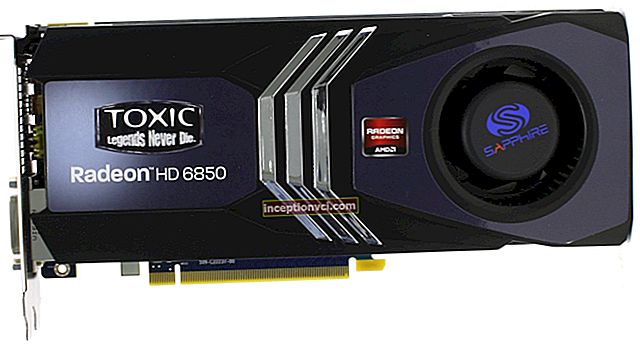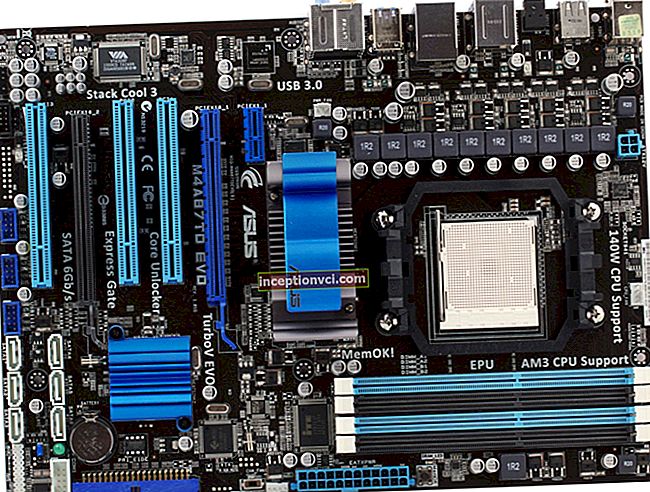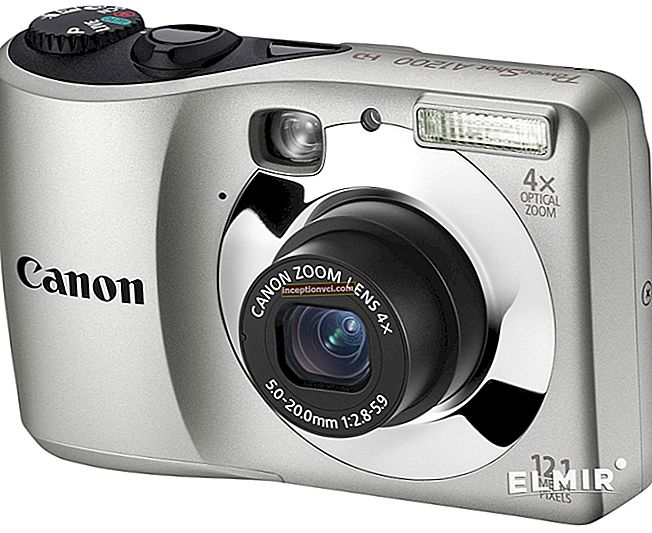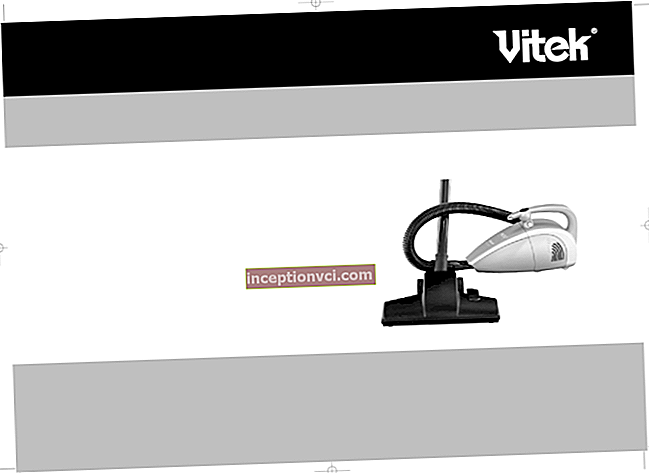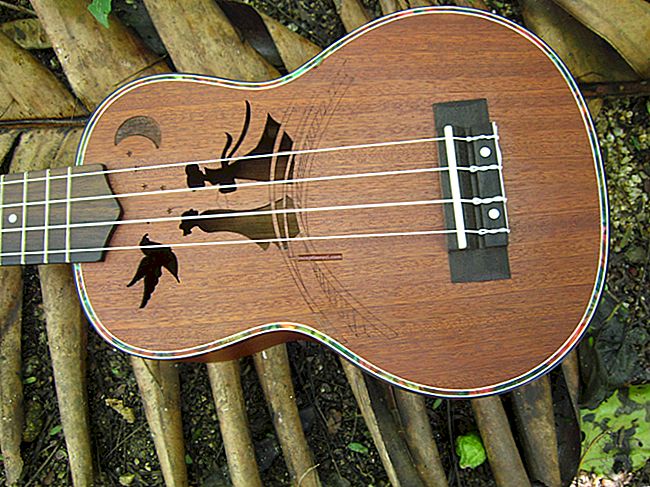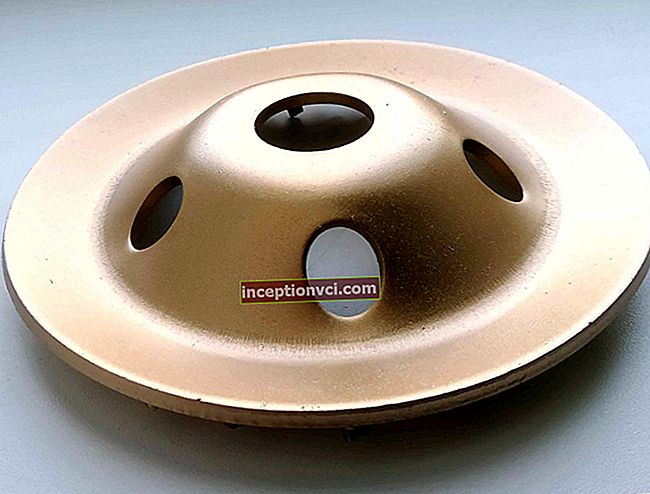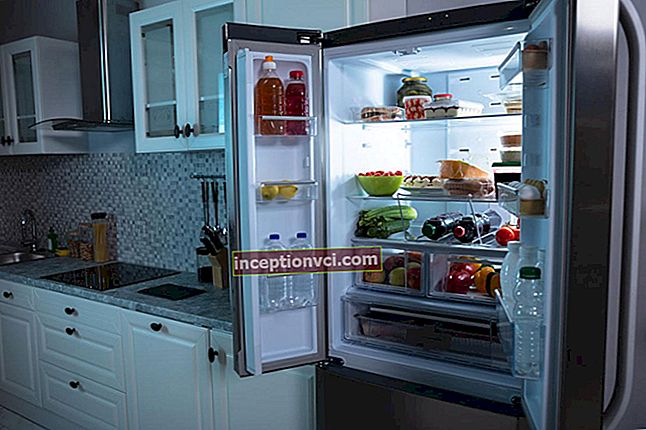NIKON D2X Review
Nikon is not used to doing things slipshod. Such a solid approach to business has formed the company's image as a manufacturer of photo-optical products worthy of the experienced hand of the highest class professionals. For the Nikon family, the birth of a new product is a significant event, if only because Nikon children are not born just like that, in a hurry. Considerable time is allocated for the development and testing of new products - a strategy, you must agree, is a little risky, given the supersonic dynamics of the development of competitive relations and technological processes in today's world. It is logical to assume that the creation of high-end products, one of whose representatives we are going to talk about in this review, takes the most precious time.


The company hinted at plans to retire a veteran of the professional photography camp D1X Nikon back in the summer of 2003, presenting its "rapid-fire" DSLR for the D2H pros. However, the next flagship D2X came under the Nikon banner only 12 months later, and the camera reached the store shelves only six months later. Finally, everything seemed to fall into place. But here's the trouble: it turns out, while the Nikon headquarters was thinking, in the "Silicon Valley" Canon was testing a 16-megapixel full-frame miracle, the name of which is the EOS 1Ds Mark II, at full speed. Well, Nikon is once again forced to catch up with the leader.
Let's try to assess the odds of D2X from a professional point of view. They look good at all, and not least due to the increase in the effective resolution of the matrix of the APS-C format camera (23.7x15.7 mm) to 12.4 megapixels. By the way, the conventional CCD sensor used by Nikon so far has given way to a CMOS sensor, so the proprietary LBCAST technology, which allows achieving high continuous shooting speed, had to be abandoned. However, CMOS technology has an equally powerful "rate of fire" potential. Recall, unlike a CCD matrix, on a CMOS sensor, information is read individually from each of its cells with certain x / y coordinates. It is clear that thanks to the coordinate system, it is easy to access individual cells. This allows you to use such a matrix not only directly for shooting, but also for exposure metering, and for controlling the autofocus operation. The internal architecture of the camera's image processor has also undergone changes. In short, now the original information is read separately for each of the four channels - red, blue and two green. In theory, this should speed up the data processing process, guaranteeing more stable and high-quality results. Want to intrigue you more? In addition to all of the above (including the standard set of first-class digital-mirror miracle technologies, which will be discussed a little later), the D2X also claims exceptional attention from professional photographers - 8 fps in partial frame mode sounds more than encouraging. The phrase "in mode" is a little alarming, but more on that later.
The first thing we immediately noticed was that the D2X case is almost an exact copy of its predecessor D2H. To be honest, I even had to check the name. Indeed, D2X. Actually, with this we have said almost everything about the body of the device. Connoisseurs in the know: Previous model: Dust and waterproof hi-tech unit in a magnesium alloy shell. The new D2X seems to be just as invulnerable. No one counted how many special rubber seals protect its body from moisture ingress, but, we admit, there are a lot of them. Fortunately, in May there was no shortage of rainy days, and therefore we had plenty of opportunities to test the camera for water resistance, which we did not hesitate to use. The clothes had to be dried on a radiator; the camera did not need to be dried at all.This is understandable, because the device was created for people who earn their living by hard photographic work, being often in extreme climatic and political conditions. Photojournalists are heroic people. Nikon professional DSLRs have always been renowned for their ergonomics. The D2X is definitely a weighty lady, but still, even holding the camera in one hand, you feel its balance. From our point of view, the location of the controls is also well thought out. The developers decided to combine mechanics - for example, the metering switch or the continuous shooting mode dial with the increasingly popular electronic approach to implementing camera control such as "press the button, turn the dial." And I must admit that this combination works great. Is it bad if you just need to click a button or switch a couple of times to access the basic functions - integral parts of the shooting process (such as white balance or ISO sensitivity), without looking into the maze of the virtual menu?
However, we got a little excited, calling the Nikon D2X menu a labyrinth. Navigation is carried out almost in one touch - by pressing the Menu button, or by manipulating the thumb with the thumbpad. Moreover, as it turns out, the D2X menu system is perhaps the best implemented among those with which we have had to deal. And this is a huge plus for a professional camera. After all, a large number of functions and parameters need a reliable systematization. Nikon is not just about a good location of commands in the menu tree, but also about their amazing functional implementation. For example, let's talk about one of our favorite "menu dishes": the window for evaluating the amount of battery charge. Not only does the camera provide information about the remaining charge and the number of shots taken since the last recharge, it also informs you if the battery needs to be calibrated, and also warns of the likely need to buy a new battery (indicating the approximate date of failure of the current battery) ...
In addition to navigating through menus, the thumbpad is also used to select focus points - but this is a little more complicated. After working with the D2X for several days, we came to an unpretentious but reflective conclusion: the camera's autofocus system itself is nothing more than another technological miracle. In short: there are 11 focusing points - nine cross-type sensors located three in a row, and two linear sensors located at the sides of the frame. Each of these points can be selected individually, in groups, or given the right to select the camera. Cross sensors play a major role in the focusing process as they are active in both the vertical and horizontal planes. And nine sensors of this type are the pinnacle of Nikon's technological advances in photography: the F5 released in 1996 had only three such sensors in the center and two others, horizontally adjacent to the center.
During testing, we tried all AF zone modes and we can say that each of them is good for the right situation. The name of the single-area focusing mode speaks for itself. Dynamic AF with focus tracking and Lock-on forces the camera to maintain focus as it moves from one point to another when shooting a moving subject. In Group Dynamic Focus mode, you can select one of five focus point combinations to focus on. Well, dynamic focusing with the priority of the closest object implies automatic selection of the focus area in accordance with the location of the object closest to the camera. Only occasionally has the D2X's autofocus system been fooled by overly contrasting subjects, but for the most part its speed and accuracy have been impeccable.The autofocus results are doubly striking when you consider that the camera does not have a separate a / f illumination LED. Truly, who would bother with manual focus with such powerful autofocus? Shutter lag? What do you mean. The mirror rises and falls silently, the dimming of the viewfinder is negligible. The recording times of image files on the CompactFlash memory card are quite good. The time increased only if the noise reduction algorithm was activated - at shutter speeds longer than 2-3 seconds. If desired, you can simultaneously record RAW and JPEG files, but you just feel the need for an additional memory card slot - professionals often reinsure themselves by creating backup copies of images. There are two levels of JPEG compression, and Nikon also introduced a compression algorithm for RAW files, which reduces their size by approximately half. Of course, in this case, you will have to come to terms with the loss of data inevitable during file compression. However, the difference between NEF RAW uncompressed and compressed seemed so insignificant to us that for the sake of more rational use of the memory card, we preferred the latter format of "raw" files. The D2X is capable of high-speed shooting, rendering a burst of 22 JPEG frames at 5 fps. In fact, this should be enough for professionals. In addition, there is also a continuous shooting mode with a part of the matrix.
Remember, at the beginning of the review, we promised to intrigue you? In English it is called high-speed crop mode. The camera allocates part of its matrix for shooting in this mode, corresponding to the total resolution of 6.8 megapixels, and calmly reproduces images with it at a speed of 8 frames / sec. The most interesting thing is that it is the central part of the sensor that is taken, that is, the rectangle is smaller than the CMOS matrix itself, the area. And this means only one thing: the crop factor increases from 1.5 to 2x. Thus, the focal length of any lens in the mode of shooting with a part of the matrix is doubled! Does a 300mm telephoto lens turn into a 600mm one? Exactly. Metamorphoses also touched the viewfinder frame, which is "cropped" at the edges. As a consequence, two linear-type AF sensors fall out.
It is difficult to say why the creators decided to implement the "cut-down" continuous high-speed shooting mode in this form. Perhaps this was required by a special in-camera algorithm for reading data from the sensor. It seems to us that everything could have been done more successfully: for example, by limiting the size of the original image or implementing high JPEG compression, without depriving the photographer of the opportunity to get 12.4-megapixel frames at the same rate, albeit more compressed. Thinking about the new continuous shooting mode, for some reason an analogy with digital zoom arises in my head (everything revolves around the central part of the frame, which is magnified beyond recognition). But this, of course, is a completely different story. Meanwhile, perhaps, high-speed crop mode is quite a deliberate step in Nikon's market strategy. After all, the shooting speed is the only thing where the D2H beats the D2X. Having completely equalized the rights of these two cameras, wouldn't Nikon personally sign the verdict of the 4MP D2H, which then simply no one would buy? 4 megapixels versus 12.4. The choice of potential buyers seems to be obvious. However, it is not yet known how the D2X will deal with digital noise: the dimensions of the cameras' sensors are the same, and the number of pixels in one of them is almost three times larger than that of the other. We will learn the answer to this question thanks to our first effective method of quantitative analysis of image quality using the Imatest program. I would also like to mention such potentially useful D2X features as Multiple Exposure and Image Overlay. The first allows you to combine from 2 to 10 images into one frame, the second creates one image from two recorded in RAW format, which is very convenient if you need to reproduce a drawing or diagram, leaving space on the photo for captions, footnotes, graphs, etc. .d. And, of course, the system for determining the white balance. As you already know, three sensors are used to measure illumination, as well as a manually set color temperature. The D2X has handled this age-old digital camera problem very well in most cases.I was a little disappointed by the installation of the car when shooting in a room illuminated by incandescent lamps: the images were replete with warm tones. You can't get away from this - the light of such lamps lacks cool blue-blue tones, and the system in auto mode perceives everything as it is. We could talk about our impressions of working with the camera for a very long time, praising (and where necessary criticizing) its functionality. For example, one could mention the excellent work of the color matrix 3D metering, thanks to which the exposure of the images almost always turned out to be flawless - no underexposure, forcing you to do post-processing (which the same Nikon D70 suffers from). Unfortunately, the size of this review is limited.
When it comes to image quality, the camera test results are the best. For now, we will only touch on a few selected points. A common defect such as blooming with many lower grade digital SLRs is almost unknown to the D2X. How many times the spring sun peeking out from behind tree branches appeared in our test photos, and never once did it result in the above defect. In general, beginners should remember this rule: when photographing against the sun, try to choose the smallest aperture available to your lens. The exception is sunsets captured with a telephoto lens.
One of our lenses - AF-S Nikkor 24-85 mm - in some places "painted" chromatic aberrations visible at high magnification - a narrow strip of pixels colored with parasitic magenta at the border of contrasting objects. But most likely, when preparing images for printing in magazines and newspapers, this disadvantage can be neglected.
When tested for the effectiveness of the long exposure NR function, the D2X performed excellently. In such cases, in order to avoid digital noise appearing on a dark background in the form of colored dots, the camera doubles the exposure time of the sensor - sets the normal shutter speed and captures the second - an empty black frame. By comparing the two results, the algorithm calculates digital noise. We know from experience that no matter how dark the night sky is, it usually takes a few minutes for a normal exposure. No more. We mounted the camera on a tripod, closed the lens and eyepiece of the viewfinder, and set the shutter speed to 20 minutes to be sure. Ideally, a completely black frame should have turned out. And that's how it turned out. So the Nikon D2X is capable of a lot, and the dynamic range it reproduces, especially shadow detail, overall resolution and individual tones, is truly amazing.
So is this Nikon worth buying when the 16-megapixel Canon EOS 1Ds Mark II beckons with its unrivaled megapixel sensor? As for the price, of course, it is much more profitable to buy the D2X. But is it worth overpaying, if it is not yet a fact that the difference in image resolution is so noticeable? Judge for yourself: Canon has 25% more resolution on paper than Nikon. However, when printing, images are obtained with an area difference of only 12.5%. So what does the price difference go to - to be able to get one or two inches larger (at 300 dpi print resolution)? Not certainly in that way. The fact is that the files obtained with the EOS 1Ds Mark II reach the coveted 50 MB - the size required by most of the world's leading photo agencies, such as Corbis. To achieve this, our D2X will need a bit of interpolation - about 20% to be exact. Perhaps, in this respect, the camera is slightly inferior to Canon. On the other hand, such a difference can be considered quite relative, and for printing even in the most serious magazines, what Nikon offers is enough. No argue - Canon is definitely worth it. However, we have never used the word "ideal" when describing it, although oh, how we wanted. One could leave tons of positive reviews about the Nikon D2X, but, again, without this epithet. We all know that there are no perfect cameras.Another professional Nikon DSLR has already taken its place at the top of the photo olympus. She didn’t oust Canon from there, no, she just set up her own camp, to which dedicated fans will surely reach - professional photojournalists, studio professionals and photographers who shoot nature in difficult conditions.
Test results
Digital noise
We can draw the following conclusion: despite the smallest pixel size of the D2X CMOS sensor among all Nikon DSLRs, digital noise is significantly lower than that of Nikon D70 and even D2H. At ISO 100, 200 and 400, 99% of the time, digital noise shouldn't be a concern for professionals at all. At ISO 800 the camera started to sacrifice fine details, but even at ISO 1600 the shots were quite suitable for further work. And only ISO 3200 (or the camera's Hi2 setting) resulted in a noticeable loss of detail and color saturation. However, this problem was much less conspicuous on the finished printouts.
Resolution / Sharpness
The MTF value (modulation transfer function) plays a key role. The world is photographed with alternating black and white vertical stripes. As the frequency of their repetition increases, the contrast will decrease. The dependence of the reference contrast (100%) on the repetition rate of black and white lines in cycles per pixel (adjacent lines make up a cycle) is called the modulation transfer function. An important value is the frequency with a value of MTF = 0.5 (50%) - MTF50: the higher it is, the sharper the image. An analogue of MTF50 for such a curve is a parameter called 10-90% edge rise distance - the distance in pixels at which the white (black) level changes by 80% - from 10 to 90%. The smaller it is, the sharper the image. Overall, the D2X delivered excellent resolution ranging, depending on the lens we are using, from 1300 to 1550 lines per frame height in partial-sensor mode. Full-frame resolution potential reached 2000 lines.
Color spectrum
The camera is doing great with color rendition. Slight red saturation is a common practice for digital cameras trying to make skin tones appear more vibrant and attractive. Yellow and green are fine, blue is slightly oversaturated. The color shift is also due to the warm temperature of the light from the flashes we used. However, we repeat, in general, the color rendition is very enviable. This is also confirmed by the following scheme.
Interfaces
If Nikon can be blamed for anything here, it is the lack of a FireWire port. It's a pity that there was no room for one additional connector on a camera of this level. The package does not include an adapter for connecting to the network, although the corresponding socket, of course, is available. On the right side of the camera, in addition to the USB 2.0 port, there is an audio-video output. A connector is provided for synchronizing an external flash, as well as a 10-pin connector for remote control. Infrared remote control is not included in the delivery set. The last two connectors are hidden under screw-out bushings, which can easily get lost. What can you do, at least the connectors are thus protected from dust. The camera is compatible with external Nikon Speedlights and third-party flash units that support I-TTL and D-TTL control systems.
The latest Nikon professional DSLRs are capable of transmitting data to remote computers using the high-speed IEEE 802.11 b / g protocol. You only need an additional WT-2 transmitter. A huge advantage that opens after its purchase is support for the PTP / IP (Picture Transfer Protocol over Internet Protocol) protocol and the ability to control the camera from a distance using Nikon Capture 4.2. This can be useful not only for sports photographers or professionals working in the field, but also for studio regulars: each picture can be previewed through this program on the computer screen. Transferring one large JPEG file using the WT-2 takes only 5-6 seconds.Just do not forget that in addition to the positive side of wireless connections - incredible flexibility in work, they also have a negative side - the risk of becoming a victim of hackers who cost nothing to intercept your username and password requested by the FTP server. Working over secured networks mitigates this risk to some extent.
Key performance indicators
Ready to shoot after power on: instant
Shutter lag: absent (according to the official data of the manufacturer - 37 ms)
Image file writing speed:
Best quality JPEG - approximately 0.5 sec
RAW (uncompressed) - approximately 3 sec
RAW (compressed) - approximately 1.5 sec
10x HQ JPEG - approximately 5.5 sec
10x RAW (uncompressed) - approximately 30 sec
10x RAW (compressed) - approximately 15.5 sec
Continuous shooting speed:
high-speed continuous - up to 5 fps in a burst of maximum 22 frames
low-speed continuous - up to 4 fps (7 fps in high-speed shooting mode with a part of the matrix)
high-speed shooting with a part of the matrix - 8 frames / sec
Image file sizes:
JPEG is the best quality, maximum size is about 11 MB (compression ratio 3: 1)
RAW - approximately 21 MB (compression ratio 2: 1)
TIFF - approximately 38-39 MB
Key points
Vertical handle
Ideally, it should duplicate the main grip and on cameras of this level is an indispensable part of the external architecture of the case. The grip has its own shutter release button and its own control dial. When using the camera in its normal “horizontal” position, we recommend that you lock the second shutter button to prevent accidental pressing. On the D2X, it is slightly higher than on Canon professional DSLRs, and therefore, free fingers may inadvertently touch it.
Data storage
The D2X has only one slot for CompactFlash I and II cards. The camera is also compatible with Microdrive cards. The FAT32 file system is supported, which means that CompactFlash with a capacity of more than 2 GB is accepted. First, we raise a small flap, then press the button to open the main compartment, and another button to actually remove the memory card. The camera does not turn off. In short, the D2X is gaining more and more points for its excellent design
Interfaces
More details about them will be discussed below. For now, let's restrict ourselves to the following: a standard high-speed USB 2.0 connector is certainly very good, and the ability to connect an additional WT-2 wireless transmitter supporting the IEEE 802.11 b / g protocol to it is even better. But the lack of a FireWire interface is disappointing, to put it mildly. Standard AV / DC connectors are naturally provided
Batteries
The Nikon D2X uses a lithium-ion battery, which usually lasts for 850-2600 shots. Naturally, its life cycle will depend on the autofocus mode, ambient temperature, frequency and duration of operation with the LCD display, the type of lens, and even whether you are recording JPEG or RAW files (the latter make the camera give more battery juice , since writing them takes more CPU time)
White balance
An external light sensor is one of the devices that the camera uses to determine the white balance. Within each of its five preset modes, there is a choice of different color temperatures on a conventional scale from -3 to +3. The coolest color temperature - bluish tints - corresponds to the minimum value. If desired, you can set the color temperature manually
LCD information panel
The upper information panel is very convenient for online verification of the current parameters of the camera. We appreciated it while filming in the field. Here you will find information about the state of the battery, the number of frames taken and remaining for recording on the memory card (this information is displayed on the LCD panel even after the camera is turned off - not a bad idea), the current exposure settings, the ISO parameter,exposure compensation by scale, etc.
Main menu
The menu system of this professional DSLR features easy navigation and a user-friendly interface. The thumb-pad manipulator "takes care" of the navigation convenience. If suddenly you still get confused in the parameters or accidentally choose something wrong, you can always return to the default parameters using the Reset option
Custom settings menu
It contains all the user-configurable parameters, which are summarized in several submenus, each color-coded and alphabetic, categorized as autofocus, metering / exposure, timers / autofocus lock mode, shooting modes / display, bracketing / flash, and customizing controls. Possibility to create four separate user profiles
Histograms
In playback mode, histograms, information about EXIF metadata, used focus points, etc. are available. In addition to the main histogram, there are graphs of tone distribution for each of the channels, as well as a histogram of overall brightness. But the tool for enlarging the picture in the histogram mode is rather an unsuccessful experiment of designers.
High-speed shooting function with part of the sensor
The high-speed crop mode setting is hidden in the Shooting menu. We select the On command and force the camera to shoot with the central part of the CMOS sensor, the resolution of which will be 6.8 megapixels. In this case, the shooting speed increases to 8 frames / sec. When set to this mode, bounding boxes will appear in the viewfinder. We haven’t come across such a function yet.
Color space
The Shooting menu contains a Color Mode submenu. The photographer is offered a choice of three color modes, numbered I, II, III. The first mode is set when you need to shoot a portrait, the third is suitable for landscape photography. The second mode is used when serious post-processing and computer retouching of images is required. The menu also contains options for adjusting sharpness, contrast, and tint.
Help function
It turns out that even professionals sometimes need help, because you will not constantly carry a user manual with you when the mass of one D2X “body” is enough to throw dumbbells for a long time. But there is also such a thing as professional lenses. We often clicked on this little question mark in the corner of the screen, sorting out what's what along the way
Verdict
The Nikon D2X has some strengths - usability, functionality, reliability of construction, image quality, and all this for relatively little money. Although we agreed that we will not use any words with the root “ideal”, let us prefix “almost”.
Functionality
Everything is fine, but we question the success of the implementation of the high-speed shooting mode with a part of the matrix, and the lack of FireWire is also unforgivable.
Construction quality
During testing, my finger accidentally pressed the shutter button on the vertical grip several times - it just had to be locked. Super robust and reliable case
Ease of use
Despite its weight, it is perfectly comfortable in all respects. The controls have an intuitive layout, the menu is simple and logical
Image quality
Highest mark. Images are distinguished by excellent resolution, correct color reproduction, wide dynamic range, sharpness, low noise
Price / performance
Considering the rest of the price offers and the quality of this product, we can safely say that the D2X is worth its money, working off every dollar spent on it
Specifications (edit)
Image sensor: 23.7x15.7mm CMOS sensor
Shared Pixels: 12.84 million
Effective pixels: 12.4 million
Maximum image size: 4288x2848 pixels; high-speed shooting in partial frame mode - 3219x2136
ISO sensitivity: 100-800; 1600-3200 in Boost mode
Data storage format: NEF-RAW (12-bit RAW uncompressed or compressed), TIFF, JPEG
Color spaces: sRGB, AdobeRGB
Bayonet mount: Nikon-F
Lenses: AF Nikkor (including AF-S, DX, VR and D- / G) - all functions are available; other types of lenses are compatible, but with partial loss of certain functionality
Autofocus: TTL phase detection, Nikon Multi-CAM2000 autofocus module
Autofocus range: EV from -1 to +19 (at 20 ° С and ISO 100)
Focus areas: selection from 11 areas (with high-speed shooting with a part of the sensor - 9 areas)
Autofocus illuminator: none (Nikon external Speedlights can operate in stroboscopic mode, sending the pulses necessary for focusing)
AF area modes: single-zone, dynamic with tracking focus and Lock-on function, dynamic with priority of the nearest subject, group dynamic
Focus modes: single automatic (S), continuous automatic (C), manual (M). Focus tracking system is activated when focusing on the subject in the first two modes
Exposure metering: 3D Color Matrix Metering II, Center-weighted, Spot
Metering range: 0-20 EV (2-20 EV with spot metering), temp 20 ° C and ISO 100
Exposure modes: Auto, Program (Flexible Program), Shutter / Aperture Priority, Manual
Exposure compensation: +/- 5 EV in 1/3 EV steps
Auto bracketing: Exposure, flash and white balance bracketing - 2 to 9 frames burst
Compensation step size: 1/3, 1/2, 2/3 and 1 EV
Excerpt: 30-1 / 8000 sec, Bulb mode
Depth of field preview: provided
Shooting modes: frame by frame; high-speed continuous, high-speed shooting by part of the matrix; low speed continuous; self-timer mode with a timer; preliminary lift of the mirror; image overlay mode
White balance: auto, manual mode (6 levels), preset modes (5 settings), indication of color temperature (K)
Flash connectors: hot shoe platform, external flash sync connector
Flash sync at shutter speed: 1/250 sec
Flash modes: Front-curtain sync (normal), red-eye reduction, slow sync, slow sync with red-eye reduction, rear-curtain sync
Flash output compensation: via Speedlight
Viewfinder: non-replaceable optical with pentaprism with built-in diopter adjustment from -3 to +
Viewfinder field of view: approximately 100%
Image settings: sharpness, tonality, tints, three color modes
Cards memory: CompactFlash type I / II, Microdrive
LCD display: color, low temperature, polysilicone, 2.5-inch TFT, resolution 235,000 pixels
Video output: NTSC / PAL
Interface: USB 2.0
Remote control: 10 pin connector
Batteries: Lithium-ion battery EN-EL4 with a capacity of 1900 mAh (11.1 V DC)
Dimensions (edit): 157.5x149.5x85 mm
Weight (without battery): 1070 g

